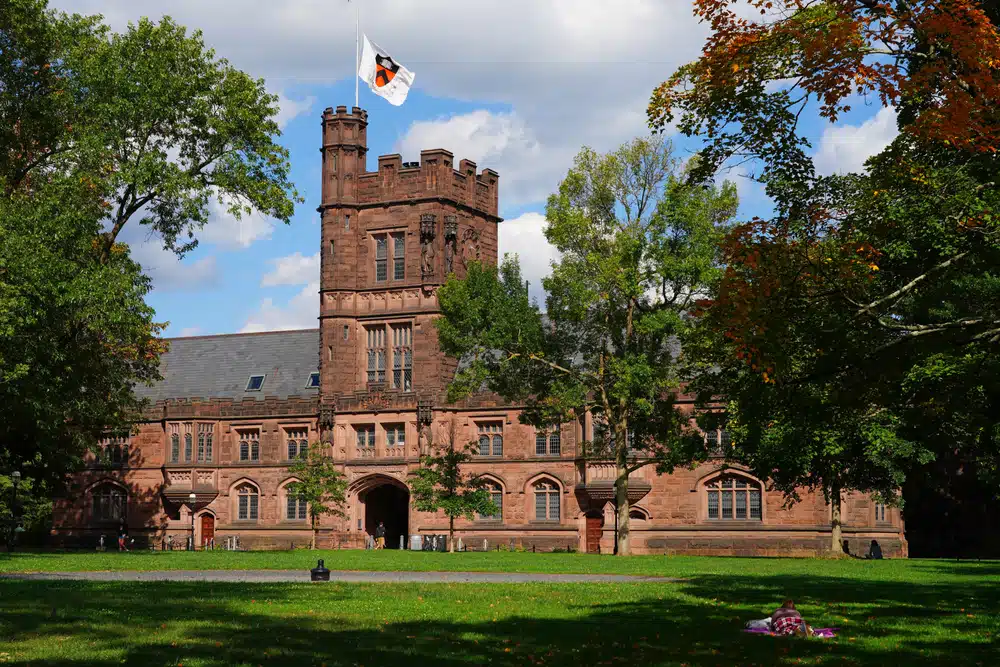Princeton Freshman Class Size
Gaining admittance into an Ivy League institution like Princeton University is a lofty goal for many bright students worldwide. An important characteristic of Princeton University, like any other institution, is the size of its freshman class. To understand this in detail, we will delve into various factors, from admissions processes to policy impacts.
Understanding the Princeton Freshman Class Size
The size of the Princeton freshman class has varied across different years, influenced by various factors. These factors range from the number of applicants, and institutional priorities, to the broader educational landscape.
Princeton University, known for its prestigious academic programs and vibrant campus life, carefully considers multiple factors when determining the size of its freshman class. The university’s admissions team meticulously evaluates the number of applicants, taking into account the quality and diversity of the pool. They strive to create a well-rounded class that represents a wide range of backgrounds, talents, and perspectives.
Early decisions, regular decision applications, and transfers play significant roles in determining the size of Princeton‘s freshman class. Early decision applications, which allow students to apply to their top-choice school early in the admissions cycle, can have a significant impact on the class size. These applications often come with a higher acceptance rate, as students who apply through this process demonstrate a strong commitment to attending Princeton if admitted.
In addition to early decisions, regular decision applications also contribute to the overall class size. Princeton receives a large number of applications from highly qualified students from around the world. The admissions team carefully reviews each application, considering academic achievements, extracurricular involvement, essays, and letters of recommendation.
Transfers, another factor influencing the class size, provide an opportunity for students who have completed college-level coursework elsewhere to join Princeton as sophomores or juniors. The number of transfer students admitted each year can impact the overall freshman class size.
Furthermore, the university’s financial ability to provide aid, the number of international applications received, the availability of campus housing, and academic resources also play a part in determining the class size. Princeton is committed to ensuring that financial circumstances do not hinder a student’s ability to attend the university. The availability of financial aid can impact the number of students who choose to enroll.
International applications add to the diversity of the applicant pool. Princeton values global perspectives and actively seeks to enroll students from different countries. The number of international students admitted can influence the overall class size.
Additionally, the availability of campus housing and academic resources plays a role in determining the class size. Princeton strives to provide a supportive and engaging living and learning environment for its students. The university carefully considers its capacity to accommodate students in campus housing and provide the necessary academic resources to support their education.
The size of the freshman class at Princeton can also be influenced by unforeseen factors, such as global events like the COVID-19 pandemic, which has shaken up education all over the world. The pandemic has presented unique challenges for universities, including Princeton, as they navigate remote learning, travel restrictions, and health and safety protocols. These factors may impact the number of students who choose to enroll in a given year.
Historical Trends in Class Size
The Princeton University freshman class size has portrayed a fluctuating trend over the years. There have been increases in some years, followed by decreases or steadiness in others.
Recently, the class size for the Class of 2026 is reported to be 1,500 students. The university implemented certain policies during this period to ensure that the size of the class aligns with the available resources and the university’s mission.
The class size seems to experience slight growth, reflecting the university’s efforts to accommodate more students. Princeton continues to attract a highly talented and diverse pool of applicants, and the university strives to provide them with an exceptional educational experience.
As Princeton University continues to evolve and adapt to the changing landscape of higher education, the size of the freshman class will continue to be influenced by a myriad of factors. The university remains committed to maintaining its academic excellence and fostering a vibrant and inclusive community for all its students.
The Admission Process and Its Impact on Class Size
The admission process is a complex and multifaceted procedure that plays a crucial role in determining Princeton University’s freshman class size. It encompasses various phases, including Early Decision, Regular Decision, and the management of a waitlist.
Early Decision applications hold significant weight in shaping the final freshman class size at Princeton. These applications come from students who are fully committed to attending Princeton if accepted, thereby providing an early indication of a portion of the class size.
However, the number of Early Decision applications received by Princeton can vary from year to year, which in turn affects the final freshman class size. Admissions officers at Princeton meticulously navigate this process to ensure a diverse student body and provide equal opportunities for all applicants.
In addition to Early Decision, the waitlist also plays a pivotal role in the class size puzzle at Princeton University. The waitlist serves as a lifeline for a select group of students who were not initially admitted.
Nevertheless, the number of students admitted from the waitlist can fluctuate significantly each year, thereby impacting the final class size. Some years may witness a higher number of waitlisted students accepting Princeton’s offer of admission, while in other years, fewer students may choose to do so.
It is important to note that the admission process is not solely determined by Early Decision, Regular Decision, and the waitlist. Princeton University also considers a multitude of factors, such as academic achievements, extracurricular involvement, personal essays, recommendation letters, and interviews, to ensure a holistic evaluation of each applicant.
Furthermore, Princeton’s commitment to maintaining a diverse and inclusive student body extends beyond the admission process. The university actively seeks to create an environment that celebrates different perspectives, backgrounds, and experiences, fostering a vibrant and intellectually stimulating community.
Ultimately, the admission process at Princeton University is a meticulous and intricate undertaking that shapes the composition of each freshman class. It is a reflection of the university’s values, commitment to excellence, and dedication to providing a transformative educational experience for all students.
The Implications of Princeton’s Freshman Class Size
Princeton University, renowned for its academic excellence and prestigious reputation, carefully considers the size of its freshman class and the subsequent impact it has on the university and its students. In this exploration, we will delve into two crucial aspects: the student-faculty ratio and campus life.
Class Size and Student-Faculty Ratio
Princeton takes great pride in maintaining one of the lowest student-faculty ratios among Ivy League schools. This achievement is partly attributed to the university’s consistent effort to maintain a manageable class size. By limiting the number of admitted students, Princeton fosters a more intimate learning environment where students can receive personalized attention and benefit from enhanced academic support.
However, the endeavor to maintain a low student-faculty ratio extends beyond simply restricting the number of enrolled students. The university also invests in faculty resources and development to ensure that professors can effectively engage with and mentor their students. This commitment to faculty support not only enhances the quality of education but also strengthens the overall academic experience at Princeton.
How Class Size Affects Campus Life
The size of Princeton’s freshman class directly influences the vibrant and dynamic campus life that the university offers. Smaller class sizes often create close-knit communities, where students have the opportunity to form meaningful connections with their peers and faculty members. These close relationships foster a sense of belonging and support, allowing students to thrive academically and personally.
Furthermore, a smaller class size provides ample leadership opportunities within a variety of student organizations. With fewer students vying for leadership positions, individuals have a greater chance to assume roles of responsibility and make a significant impact on campus. This not only enhances personal growth but also contributes to the development of a diverse range of student-led initiatives that enrich the overall campus experience.
However, it is important to acknowledge that maintaining a smaller class size does present challenges. With a limited number of students, there may be less diversity in terms of interests and backgrounds within classes and extracurricular activities. While Princeton strives to create a diverse and inclusive community, the statistical limitation of opportunities may pose a hurdle in achieving the desired breadth of representation.
In conclusion, the size of Princeton’s freshman class has far-reaching implications that extend beyond the number of students admitted. By prioritizing a low student-faculty ratio, the university ensures a personalized and enriching academic experience. Simultaneously, the smaller class size contributes to a vibrant campus life, fostering close-knit communities and providing ample leadership opportunities. While challenges may arise in terms of diversity, Princeton remains dedicated to creating an inclusive environment that nurtures the intellectual and personal growth of its students.
Future Predictions for Princeton’s Freshman Class Size
What about the future? How might the size of Princeton’s freshman class change in the coming years? Several potential influences need to be considered.
The Influence of Online Learning on Future Class Sizes
The emergence and growth of online learning could potentially impact Princeton’s future class sizes. The ability to hold classes online removes spatial constraints, opening up the possibility to accept more students, even those who might not be able to physically attend classes on campus.
However, Princeton and other similar institutions value their on-campus experience. Therefore, the role of online learning on class size remains to be seen.
The Role of University Policies in Shaping Future Class Sizes
Princeton, like other universities, continually revises its policies regarding admissions, faculty hiring, facility expansion, and more. These policy decisions will significantly influence future freshman class sizes.
By closely monitoring these policy changes, one can gain hints about the direction in which Princeton’s freshman class size might move in the future.
In conclusion, the size of the Princeton freshman class is much more than a number. It’s a dynamic figure shaped by many factors that directly impact the educational experience at this prestigious institution.








































